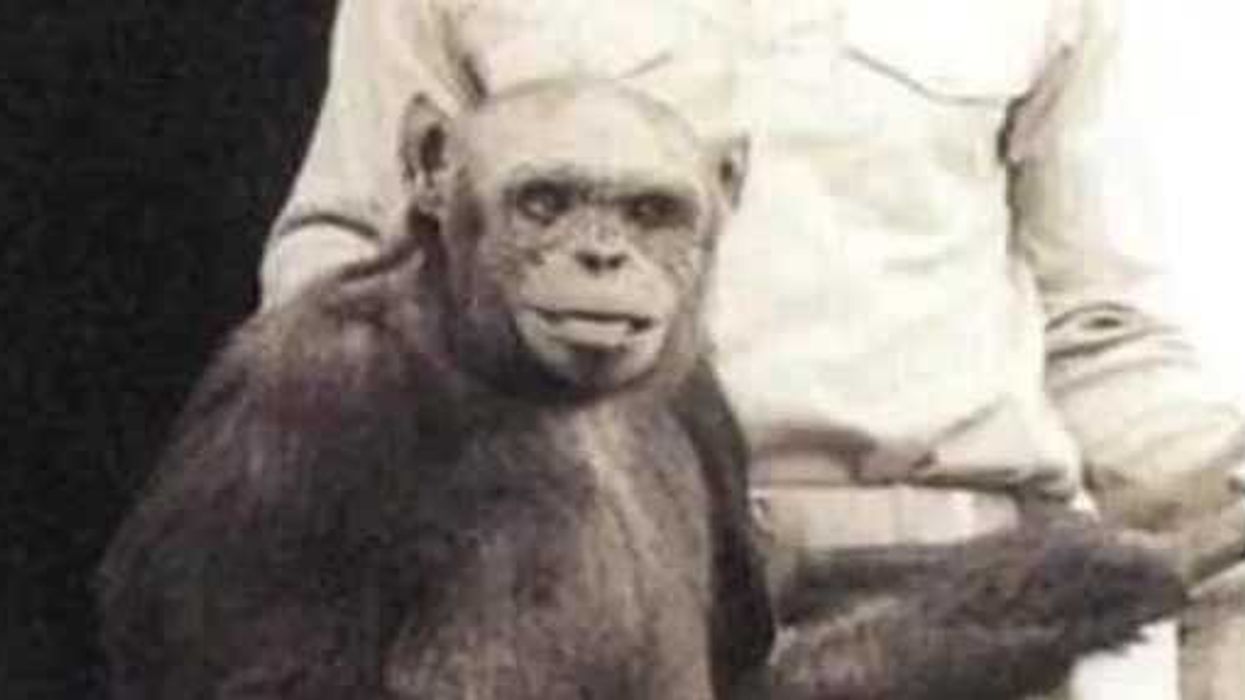Science & Tech
Harriet Brewis
Oct 04, 2025
Related video: The surprising life of retired Hollywood monkey
GeoBeats / VideoElephant
Chimpanzees are our closest relatives, so it’s not surprising that they can do many of the things that we can.
They’re able to create tools and can even use sign language, plus they share 98.8 per cent of their DNA with humans.
It is, therefore, no wonder that the question has often been asked: could humans and chimps ever produce offspring?
The answer, according to one evolutionary psychologist, is yes – and it’s already happened.
Gordum Gallup made the eyebrow-raising claims in an interview with The Sun Online back in 2018.
He told the news site that a human-chimpanzee hybrid – which he dubbed a “humanzee” – was born in a Florida lab 100 years ago.
And if you’re wondering how the scientists behind the experiment managed to keep it hushed up for decades, it’s because – according to Gallup – they swiftly killed the infant when they realised the implications of what they’d done.
Gallup, a professor at New York’s University at Albany, said his former university teacher told him that the secret birth took place at a research facility in Orange Park, where he used to work.
“They inseminated a female chimpanzee with human semen from an undisclosed donor and claimed not only that pregnancy occurred but the pregnancy went full term and resulted in a live birth,” the psychologist told The Sun.
“But in a matter of days, or a few weeks, they began to consider the moral and ethical considerations and the infant was euthanised.”
Putting Gallup’s unsubstantiated story to one side, it’s unclear whether a human-chimpanzee hybrid is even possible.
Some experts believe that our human ancestors and chimpanzees may have been capable of interbreeding as late as 4 million years ago according to IFL Science, which notes that our last common ancestor lived 6-7 million years ago.
However, the website also notes that this theory is widely contested.
It also points out that other animals with similar genetic differences to that of humans and chimps, such as horses and zebras, have been able to reproduce. And yet, the offspring are often infertile.
Nevertheless, back in the 1970s, plenty of people believed that a chimp called Oliver was a human-monkey hybrid thanks to his humanistic walk, intelligence and physical features (he was said to have a smaller, flatter face than his ape peers, according to Historic Mysteries).
It wasn't until tests were conducted on Oliver in 1996 that the matter was finally settled: he had 48 chromosomes so was categorically not a humanzee but a regular chimp.
Oliver The Humanzee www.youtube.com
Still, one certainty is that scientists continue to tread an ethical tightrope when it comes to investigating chimps and their potential to further biomedical research.
In 2021, scientists created the first (publicly documented) part-monkey, part-human embryo by growing human stem cells in a macaque monkey.
The aim of the work, which was carried out at California’s Salk Institute, was to help create organs for transplants and improve our understanding of human development and disease progression.
In 2020, a team of German and Japanese scientists spliced human genes into the brains of marmosets, resulting in the monkey fetuses having larger, more human-like brains, according to the study, which was published in the journal Science.
Once the experiment was complete, the team destroyed their creations “in light of potentially unforeseeable consequences with regard to postnatal brain function”.
One thing’s for sure, no scientist wants to find themselves the architect of a real-life Planet of the Apes.
This article was first published on 30 August 2023.
Elsewhere from indy100:
- Chimpanzees have been filmed caring for each other in this unexpected way
- Woman who had ‘affair’ with zoo chimpanzee asked to ‘change behaviour’ and ‘let him be a chimp’
How to join the indy100's free WhatsApp channel
Sign up to our free indy100 weekly newsletter
Have your say in our news democracy. Click the upvote icon at the top of the page to help raise this article through the indy100 rankings.
Top 100
The Conversation (0)














